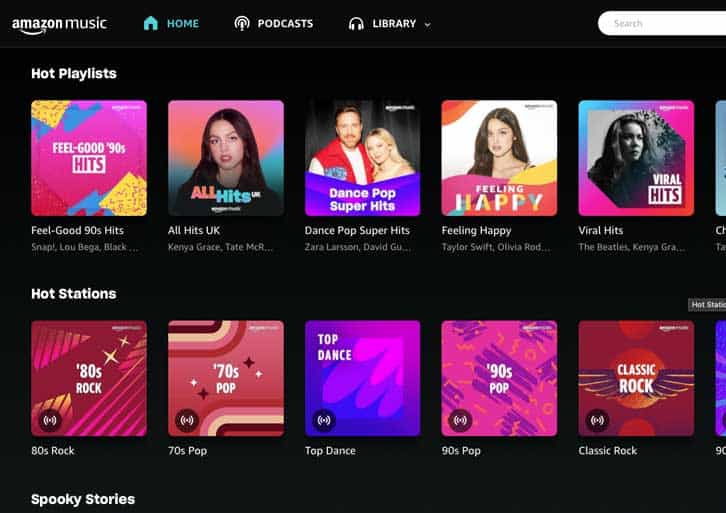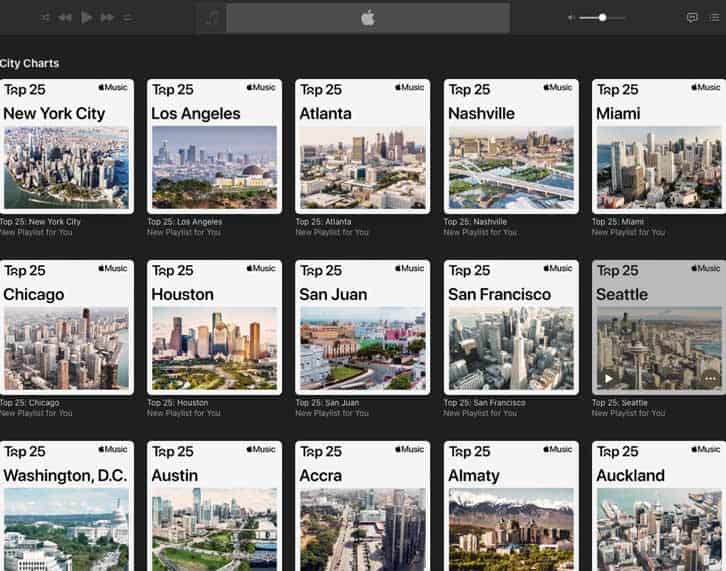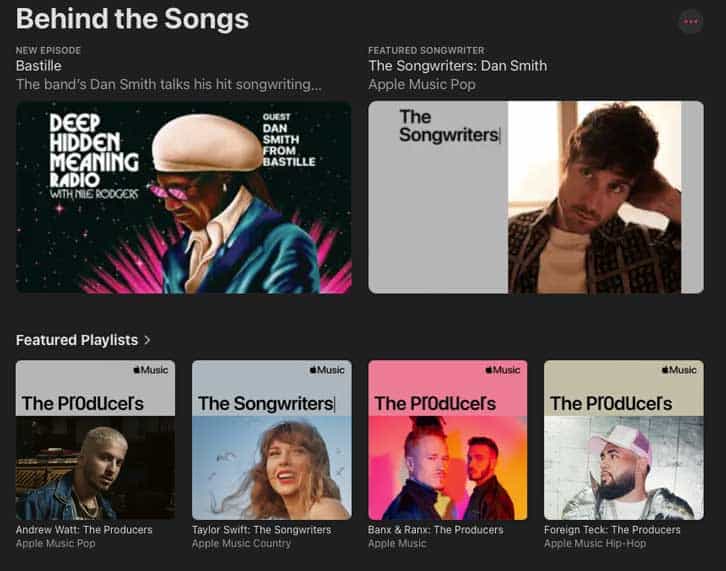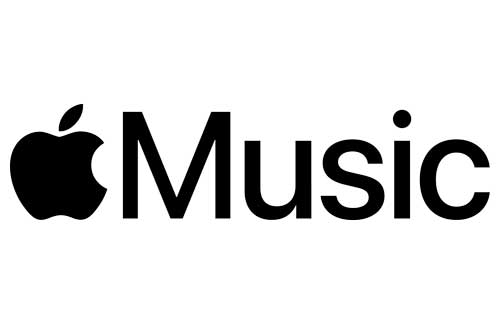Summary: Apple Music vs Amazon Music
Apple Music – Pricing and Features Overview
Individual Plan – $10.99/month
Family Plan – $16.99/month
Student Plan – $5.99/month
Free Plan – 1-month trial
Other Plans – Apple One Plan $19.95 (Bundled with Apple TV, iCloud, Fitness, and Arcade)
Library Size – More than 100 million songs
Audio Quality – 24-bit/192 kHz
Artist Payout – $.01 per stream
Amazon Music Unlimited – Pricing and Features Overview
Individual Plan – $10.99/month; or $9.99/month, $99/year with Prime
Family Plan – $16.99/month
Student Plan – $5.99/month
Free Plan – 1-month trial
Other Plans – Single Device: $4.99 (Access from one Echo or FireTV device)
Library Size– More than 100 million songs
Audio Quality – 24-bit/192 kHz
Artist Payout – $.004 per stream
Pros – Apple Music
- Huge Library, max audio quality up to 24-bit/192 kHz
- Excellent music curation making it easy to find hits and independent artists
- Superior music discovery features
- Clean aesthetic and intuitive user experience
- Some of the best exclusive content
- Equitable artist payout model, better payout-per-stream than most services.
Pros – Amazon Music
- Huge Library, max audio quality up to 24-bit/192 kHz
- Single-device plan available at a lower cost
- Functional across various devices and operating systems
- Offers ‘X-ray’ feature providing trivia and insights into songs
Cons – Apple Music
- No free plan beyond the 30-day trial
- Discontinued the voice-activated-only plan, which may disappoint some users
- For Jazz and Classical, Qobuz still wins
Cons – Amazon Music
- Finding music outside of Popular Hits requires manual search
- Music discovery and personalization weak compared with Apple Music
- For Jazz and Classical, Qobuz still wins
- Lower artist payout per stream compared to Apple Music.
Bottom Line:
With excellent curation, exclusive content, and superior user experience, Apple Music takes the crown.
Intro: What Matters More than a Huge HD Library?
All the big players in music streaming have massive libraries. And, those that do not currently offer hi-res audio have plans to upgrade in the coming years. These are no longer the questions when choosing a streaming service.
The main question in choosing a streaming service today is how well does the platform present, curate, and organize their library? There’s no point in having a huge library of lossless audio if you can’t find what you want.
In the highly competitive, rapidly changing arena of music streaming, two major players, Apple Music and Amazon Music, are definitely worth considering. In addition to their huge libraries of high-quality audio, they offer competitive pricing and device-specific advantages.
For this review, we tested both platforms thoroughly over several weeks to get a feel for how they currently match up. Let’s dive into the details…
See here for all of our reviews and information about audio production and audio gear.
Pricing & Subscription Plans
Winner: Amazon
The pricing for both platforms is nearly identical with Amazon throwing a few bones to those who use just a single device or for those who don’t mind a shuffle-only library.
Free Plans
Both platforms offer a free 30-day trial.
Amazon makes it seem like they are offering a free plan with Prime, but let’s be clear: they are not. Amazon Music Prime offers ‘ad-free access to the entire library’ for Prime members. However, this comes with some serious drawbacks.
With Amazon Music Prime, you may choose an artist, album, or playlist and listen in shuffle mode only. And sadly, ‘similar songs’ are annoyingly shuffled in. While you can always skip ahead, you are limited to six skips per hour.
Individual Plans
With the Apple Individual plan you get access to the complete song library as well as Apple Music Classical and Apple Music Sing. You can listen on one device at a time on up to 10 devices. (You can sign out of previous devices using iTunes)
A standard Amazon Music Unlimited Individual Plan is $10.99/month or $9.99/month ($99/year) for Prime Members.
This service functions as you would expect: no ads, full access to the entire catalog, unlimited skips, and the option of offline listening. You can listen on as many devices as you like, but only one at a time.
Family Plans
Both platforms offer a family plan at $16.99/month. Amazon offers an annual price of $169.
With the Apple Music Family Plan, up to six people can play music at the same time. The device limits are managed through your AppleID and each AppleID has a 10 device limit.
The Amazon Music Unlimited Family Plan also allows you to play music on up to six devices at once, with no limits on total devices.
Other Offers
Both the Apple Student Plan and the Amazon Student Plan are priced at $5.99/month for any student enrolled in a college or university.
Amazon also offers the Single-device Plan at $4.99. This plan allows unlimited access to the catalog limited to a single Echo or FireTV device.
You can now get 6 months of Apple Music free with the purchase of AirPods, AirPods Pro, AirPods Max, several Beats headphones, or a HomePod.
Apple also recently announced its Apple One Plan ($19.95/month Individual, $25.95/month Family, and $37.95/month Premier). This bundles together Apple Music, Apple TV, Apple Fitness, Apple Arcade, and various levels of ICloud storage. If you use these services, it might work out to your benefit.
Apple discontinued its voice-activated-only plan, called Voice on November 1, 2023. It was a Siri-only plan that apparently the company did not like.
Music Library & Content
Winner: Apple Music
Both Apple Music and Amazon Music offer a catalog with over 100 million songs but they are organised and presented very differently.
While Amazon is very much hits-focused, Apple strikes a nice balance between mainstream hits and independent artists. By breaking the sea of songs into genres and categories, interesting deep dives are only a few clicks away.

Apple’s search function is more intuitive than Amazon’s. You can browse by Moods, Activities, and Genres, but they also provide you with a sensible ‘recently searched’ category at the top.
Independent artists and niche genres are harder to find with Amazon music. If you’re looking for anything off the beaten path, you will have to manually search for it.
For podcasts, Amazon Music includes podcasts while Apple offers podcasts through a separate service called, you guessed it, ‘Apple Podcasts’.
For the Genre Specific: Classical and Jazz
If you’re a classical music fan, Apple’s classical music offering is much improved in recent years. In fact, they offer a separate app, Apple Music Classical (included with any standard plan), which is a huge step up from the Amazon presentation of classical repertoire. It includes detailed notes for each track listing the soloists and conductors involved, composer biographies, and work descriptions.
That said, neither Apple Music nor Amazon can hold a candle to the selection and curation offered by Qobuz. If Classical and Jazz are your thing, go with Qobuz. It used to be prohibitively expensive, but plans have recently dropped to normal numbers (currently starting at $10.83/month).
Audio Quality & Listening Experience
Winner: Draw
Hi-res Offerings
Both platforms offer a maximum audio quality up to 24-bit/192 kHz (sometimes referred to as Hi-res Lossless or Ultra-HD) depending on your bandwidth. While hi-res sounds like a great idea, you should know that your Bluetooth speaker or Bluetooth headphones won’t play your lovely hi-res files without lossy compression.
They will also use more data and take up more hard drive space.
Technical Requirements for Listening to Lossless Audio Formats
If you use a Bluetooth speaker or bluetooth headphones, you cannot play lossless or hi-res audio. Bluetooth 5.2 can only transfer up to 2 Mbps, and 16-bit/44.1 kHz format files require 2.62 Mbps bandwidth.
| FORMAT | Required Transfer Speed |
| 16 bit/44.1 kHz format (FLAC, ALAC) | 2.62 Mbps |
| 24-bit/48 kHz format (FLAC-HD, ALAC-HD) | 3.96 Mbps |
| 24-bit/192 kHz format (FLAC-HD, ALAC-HD) | 9.2 Mbps |
For ALAC and ALAC-HD files up to 24-bit/48 kHz, devices connected via Apple Airplay will work without compression.
Otherwise, you will need a good old wired connection or an external DAC (digital-to-analog converter) to listen to 24-bit/192 kHz format properly. Note that Apple’s Lightning-to-3.5mm and USB-C-to-3.5mm adapters can handle only up to 24-bit/48 kHz audio format.
The platforms use different file formats which amounts to different letters for the same thing. Amazon uses AAC for standard audio format and FLAC or FLAC-HD for hi-res audio. Apple uses AAC for standard format, and ALAC or ALAC-HD for lossless and hi-res audio.
Note: With Apple Music, you need to switch ‘lossless audio’ on to higher-resolution ALAC (Apple Lossless Audio Cocec) files rather than the standard AAC (Advanced Audio Codec) files.
Spatial Audio
This technology comes to us thanks to VR nerds. It mixes the sound in a 3D landscape around your head. The soundscape changes with the movement of your head using dynamic head-tracking.
Apple offers Dolby Atmos spatial audio while Amazon Music offers a version using Dolby Atmos and Sony’s 360 Reality audio.
Apple has had a Spatial Audio feature available for television content, and now it is expanding to Apple Music audio content. Apple Music includes a category of Spatial Audio content only.
Note that you will need to be using headphones that support spatial audio for this to work. Popular headphones that support spatial audio include AirPods Pro, AirPods Max, Sony WH1000-XM5, or Sony WF-1000XM5.
Music Discovery & Personalization
Winner: Apple Music
Both Amazon Music and Apple Music have invested heavily in algorithms and features that aim to introduce listeners to new tunes while also catering to their established tastes.
Apple wins in the area of music discovery. Amazon offers the usual playlists such as ‘70s Rock’ or ‘Best of Drum & Bass’ and not much more. Meanwhile, Apple Music continues to add music discovery playlists and channels. Highlights include:
- Mood playlists like: ‘Chill’, or ‘Romance‘
- Activity-based playlists in the ‘Just Ask Siri’ section. Examples include: ’Hitting Reset’, ‘Going to School’, and ‘Self Care’
- City Charts – gives you a top 25 tracks from cities across the globe.

User Experience – Mobile, Desktop, and Web Apps
Winner: Apple Music
Except for Echo and FireTV devices, Apple Music has over Amazon Music in terms of user experience. With a cleaner aesthetic, more visible album art, and quicker access to deep dives on content, Apple Music shines in this department.
Mobile Experience
The mobile experience of Apple Music is seamlessly integrated into the pre-installed Music app on all Apple devices, boasting a clean, white aesthetic. It is also available for Android.
Its organization is intuitive, with tabs for personal libraries, browsing the Apple Music collection, radio stations, and personalized recommendations.
On the other hand, Amazon Music sports a dark-themed interface and is accessible on both iOS and Android. Its layout emphasizes categories like new releases, popular playlists, and recent interactions.
While both apps prioritize user-friendly navigation and rich media players, we liked Apple Music using 3D Touch. Within a click or two, the user can be off on an interesting content birdwalk.
Desktop Experience
On the desktop front, Apple Music is housed within the iTunes application for both Mac and PC. While it mirrors the mobile app’s structure, the desktop version feels slightly less polished.
There are a few elements, however, that give Apple the edge on UX with a desktop. The drag-and-drop functionality of the permanent sidebar is really handy for organizing content. We also liked the Smart Playlists feature, which auto-generates playlists based on user preferences, and is a standout.
Amazon Music’s desktop applications for Mac and PC are user-friendly, featuring a permanent navigation bar with drop-down menus and sorting filters.
It all works fine with Amazon, but album art is smaller, and in general, it lacks the aesthetic appeal of its competitor.
Web App Experience
Until very recently, Apple Music had no Web App of any kind. They finally gave in and offered a web player that works on all popular browsers. The experience is nearly identical to the desktop app.
Amazon Music’s web player is functional and doesn’t break any design barriers. It exists and works.
Exclusive Features & Offerings
Winner: Apple Music
Both Amazon Music and Apple Music have compiled a bunch of unique features in hopes of to setting themselves apart from the crowd.
Extra Features Offered on Both Platforms
Here are a few of the extra features both services have in common:
- Voice Assistant Integration – Apple Music calls her Siri, Amazon Music calls her Alexa. Regardless of her name, users can effortlessly request songs, playlists, or genres using voice commands, making the experience interactive and hands-free.
- Device Specific Integration – Apple Music still works best with Apple devices and Amazon Music works best with Echo and FireTV devices. That said, both platforms are universally compatible with popular operating systems and devices.
- Spatial Audio – As stated earlier, Apple offers Dolby Atmos spatial audio while Amazon Music offers a version using Dolby Atmos and Sony’s 360 Reality audio.
- Built-in EQ
- Song Lyrics
Extra Features on Apple Music
Behind the Songs
Apple Music has a ‘Behind the Songs’ category that dives into the stories, lyrics, and artists behind the music. You can go into the weeds here with playlists of individual Sound Engineers, Producers, Songwriters, and even Session Musicians.
This is really what music enthusiasts have been longing for. Curated content that truly takes advantage of digital technology. This is the beginning of being able to follow the individual threads of a massive web of songs.

Additional Content
Apple Music has gone to great lengths to provide exclusive content to give themselves an edge over the competition. The most popular example of this is the Apple Music 1 Radio Station (formerly Beats 1) which features a mix of current hits and emerging artists, with exclusive videos and interviews.
Apple has an entire category of exclusive Live Performances with video performances that can be listened to in Spatial Audio featuring huge names like Billie Eilish, Harry Styles, and Ed Sheeran.
They also have loads of artist interviews, and radio shows hosted by artists including SUGA of BTS, Dolly Parton, and Lil Wayne.
Extra Features on Amazon Music
One of the exclusive features we liked most on Amazon Music is ‘X-ray’ which offers listeners insights into songs, displaying lyrics in real-time and sometimes even trivia about the track. If you’ve used this feature in Kindle, then you know how this works. It gives a little something extra to the listening experience by providing context and depth to the music.
Artist Support & Payout
Winner: Apple Music
When you get into the weeds on artist payouts, the information is not always straightforward and simple. The current average payouts for artists are:
- Apple Music – $0.01 per stream
- Amazon Music -$0.004 per stream
These numbers are only the starting point when considering artist payouts. Different artists have different contractual agreements, so providing a payout per stream amount by platform is not entirely accurate.
Key Differences
What makes Apple more appealing to artists is the company’s equitable compensation model, ensuring that all artists, whether associated with major labels or independent, receive the same rate. This approach is particularly beneficial for indie artists, as it guarantees equal pay irrespective of their label affiliation.
Under platforms where such a system is not in place, the big fish eat and the minnows die. The bigger you are, the more pull you have for receiving a higher per-stream rate.
Amazon Music does compensate artists better than most streaming platforms but it doesn’t emphasize the same level of uniformity in its payout structure as Apple Music.
The Stream Share Basis System and Payouts
Both Apple Music and Amazon Music adopt a stream share basis to determine artist royalties. In this system, the total revenue is aggregated, and a portion is designated to record labels or distributors, determined by the volume of streams. These entities then compensate artists as per their contractual agreements.
The average numbers listed above are the average of the stream share basis system payouts.
Additional Avenues for Artist Royalties
Artists are able to earn beyond just the streaming income. Both platforms present extra opportunities for artists to earn with digital sales. Amazon has its digital music storefront, and Apple boasts its iconic iTunes store.
From sales on these platforms, both services retain a 30% commission, directing the remaining 70% to labels and artists. This is in conjunction with the royalties generated from streaming, ensuring multiple revenue streams for creators.
Conclusion: Which is Best?
Conclusion: Which is Best?
All the big players in music streaming have massive libraries and most of them offer hi-res audio. Those are no longer the questions when choosing a streaming service. There’s no point in having a huge library of lossless audio if it’s organized poorly.
From our tests, it’s a clear winner. With excellent curation, exclusive content, and superior user experience, Apple Music takes the crown.
For those with Echo and FireTV devices, Amazon Music is definitely worth considering – especially the Single-Device plan, if that suits your needs. Or if you just want a shuffle-only plan that functions much like a radio, the Amazon Music Prime plan also could suit some users well.
Overall, we found that Apple Music’s user-centric approach and commitment to creators give it the edge over Amazon’s offering.


